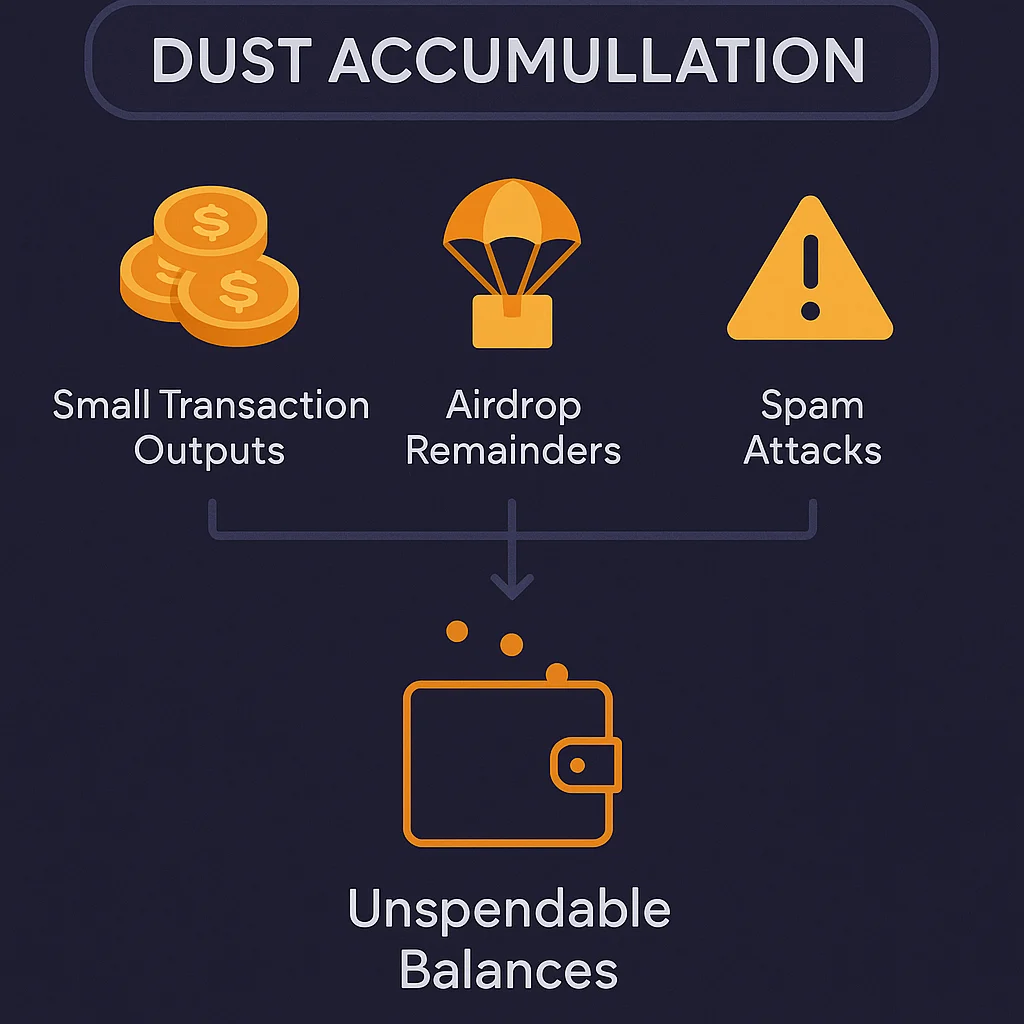Dust
Dust: Tiny Amounts That Clog Networks
Dust refers to cryptocurrency amounts so small they’re not economically viable to spend due to transaction fees exceeding their value. It’s like having pennies that cost dollars to use.
Dust consists of very small amounts of cryptocurrency that cost more in transaction fees to send than their actual value. These tiny balances accumulate in wallets over time and can clog network resources if moved.
How Dust Accumulates
Change outputs from transactions often leave small remainders that aren’t worth the gas fees to consolidate or spend separately.
Airdrop residuals may distribute tiny token amounts that become worthless after market prices decline below transaction costs.
Spam attacks deliberately send dust to many addresses to clog networks or track user behavior through forced interactions.

Real-World Examples
- Bitcoin dust limit is around 546 satoshis – amounts below this may be rejected by nodes
- Ethereum gas fees can make sub-$10 token amounts uneconomical to move during network congestion
- BSC spam tokens often leave dust amounts that users can’t profitably remove
Why Beginners Should Care
Wallet clutter from dust makes portfolio tracking difficult and can hide significant balances among dozens of worthless token remnants.
Privacy implications exist since dust can be used for tracking purposes when users consolidate small amounts with larger balances.
Network efficiency suffers when dust gets moved, consuming block space for economically insignificant transactions that could handle larger value transfers.
Related Terms: Transaction Fees, UTXO, Dusting Attack, Spam
